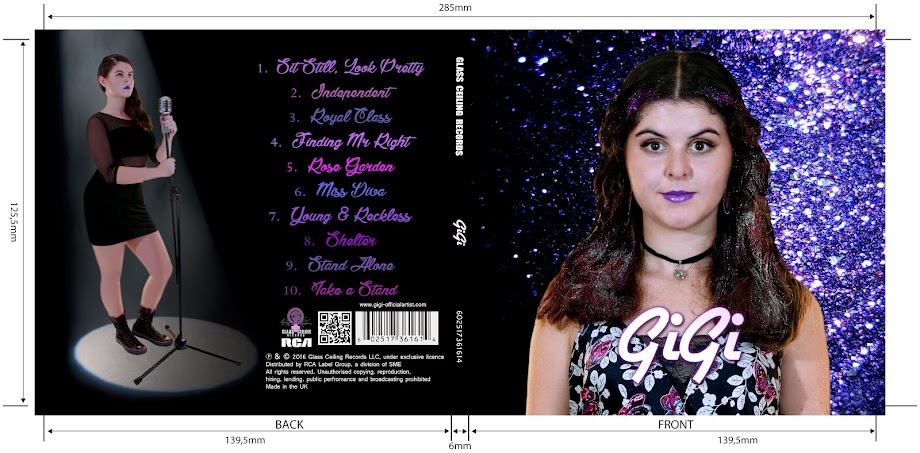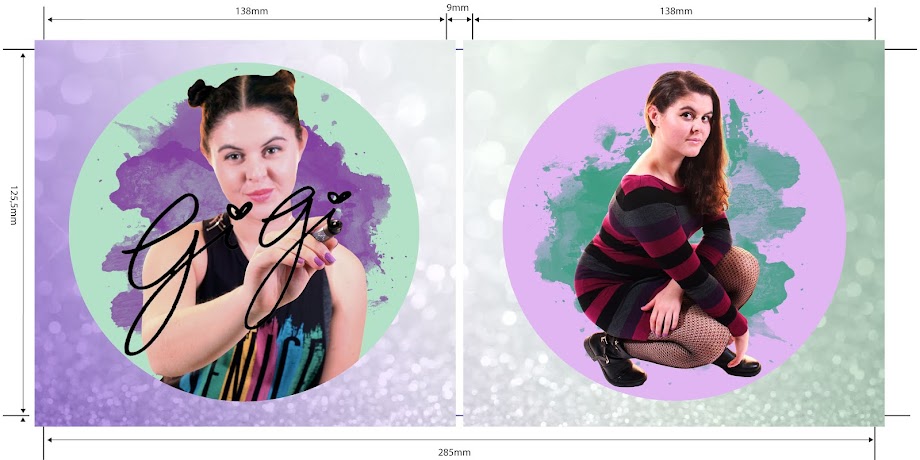Our target audience played a vital role in the construction process of our music video, digipak and website. We learned a lot from our target audience feedback and were able to make changes to our media products in order to tailor it to our target audience.
Our target audience
We aim to target an audience that is predominantly female because GiGi is a solo female pop artist who sends a clear message to young girls through her music. Due to the different age demographics within our target audience, they would consume music in various ways and have distinct reasons for listening to music. I have tried to explore this further in relation to our artist by using the Blumler and Katz model - the Uses and Gratifications theory in order to understand how we can optimise our marketing campaign.Primary audience
- Female teens and young women aged 15-24
- Fans of the pop genre but more into niche pop sub genres such as alternative pop/synth pop as opposed to mainstream pop
- Supports feminism or is aware of the cause; wants to know more about it
 |
| An example of our primary target audience |
Our primary target audience are millennials, born from mid-1990s to early 2000s. Learning about the habits of this demographic will prove extremely useful to my understanding of how to target this audience.
 |
Wikipedia entry about millennials
and digital technology.
Please click the image to enlarge
|
My initial research into millennials has taught me a lot about the way that they consume media using digital technology. A survey of over 7000 college students revealed that 97% of these students owned a computer, 94% owned a mobile phone, and 56% owned an MP3 player. This gives me insightful information about the kind of technology that our target audience are using. The large majority of teenagers own a computer or a mobile phone, more so than any other demographic.
 |
| Nielsen report: smartphone ownership by age group |
Music consumption habits
As the Ofcom report shows, the 16-24 age group spend a larger proportion of their time listening to their own digital music or streaming music than any other age group. Note that the graph does not represent the total amount of time that adults listen to music, simply the proportion of their listening time spent with each activity.
 |
| Ofcom report: graph displaying music consumption habits by age category |
Despite the fact that our primary target audience age group consume the most music, they spend the least amount of money on music. This is largely due to the fact that, as students, they are tight on money and are price sensitive. Therefore, they usually consume their music using streaming sites on the internet.
Secondary audience
- Young girls: 8-14 years old
- Fans of the pop genre/ teen-pop/ bubblegum pop
- More susceptible to mainstream music (wants to fit into the social norm to be "cool")
 |
| An example of our secondary target audience |
 |
Wikipedia entry about generation Z and
their use of technology and social media
Please click to enlarge
|
Music consumption habits
 |
| Ifpi stats on young music consumers Click to enlarge |
Tertiary audience
- Older women (parents)
- Want a good role model for their children
 |
| An example of our tertiary target audience |
Music consumption habits
As this chart from nielsen shows, 35% of money spent on music is used to buy live concert tickets. While our tertiary audience are unlikely to buy GiGi's album for themselves, they will probably spend money on concert tickets for GiGi's tour and attend the concert with their daughters.
Case study: Taylor Swift
I have chosen to study Taylor Swift and the relationship she has with her audience. Taylor is a popular pop singer who writes her own songs and has a young target audience. Learning about her will give me insight in how to appeal to my target audience.
Katz and Blumler model - uses and gratifications theory
The uses and gratifications theory is based on the face that audiences are actively consuming media and have power over their media consumption. They choose media products that meet their needs in order to achieve gratification.
I have applied Katz and Blumler's uses and gratifications theory to GiGi and her audience using my knowledge of my target audience and my study into how Taylor Swift interacts with her fans.
Construction of our media products
During the construction stage of our project, we constantly got target audience feedback so that we could adjust anything to suit their preferences. We used a range of different methods so that we could improve our understanding of our target audience.
Focus groups
We regularly held focus group sessions with our target audience. We made changes based on the feedback that we got.
Music video
Before and after grading
Digipak
Before and after grading
Before and after grading
Website
Changes to colour scheme and background
Evaluation of our media products
One-to-one interviews
Doing one-to-one interviews was extremely useful to me because I was able to ask them any questions and they were able to express exactly how they felt. Gathering qualitative data from one-to-one interviews was helpful to my project because I was able to understand the likes and dislikes of our target audience.
Survey Monkey
We used Survey Monkey in order to get quantitative data from our target audience. While Survey Monkey was not ideal for in-depth feedback, it was very useful for getting a general representation of the views of our target audience.
 |
| Click on this image to view our survey |
We have gotten quite positive feedback on all three of our media products. Our most well received media artefact was the website. If feel that most people were impressed by the high quality mock website that we produced, using only a free web tool to do so.
I have analysed the feedback that we have gotten from people on Survey Monkey.
Music video
Digipak

However, we had a few comments about what we could improve. Feedback from my one-to-one interviews has also revealed that they did not like the different shades of purple for the tracklist. Most of the target audience during feedback have stated that they would prefer it to be in one block of colour. If I had more time during construction, I would have spent time getting more public opinions on this matter.
Another issue that people brought up was that the pictures of GiGi looked 2 dimensional. This was due to the quality of the photos that we took for our promo shots and unfortunately, there was nothing that we could do to remedy that in post-production.
Website
When saying what they liked about the website, our target audience said that they like the quiz as it is interactive and fun, the behind the scenes because it gives it a personal touch and shows GiGi's natural character; and the merchandise that is available to buy in the shop page.
For what could be improve, some people asked to have a link to Snapchat, another social media site, and one person said that the pink and purple colour scheme was not their cup of tea - they'd rather have a black background throughout.
Conclusion
To conclude, my group have learned a lot from our target audience feedback. We were able to implement changes early on in construction because we scheduled feedback sessions into our timeline. When evaluating our media products, our target audience gave us a lot of positive comments as well as things that we could improve.
The main thing that I learned from my audience feedback was that, just like institutions in the music industry, we did not always get it right. Some of the choices that we made in order to specifically appeal to our target audience were miscalculated. As a result, our media artifacts may seem to target a younger demographic than our primary audience. If I were to do this project again, I may make different decisions such as choosing to primarily target a younger audience such as our current secondary audience.
Also, comments that we got during construction often conflicted with feedback from our evaluation. For example, people in construction liked the different shades of purple whereas our target audience from our evaluation preferred the text to be in a single shade.





























No comments:
Post a Comment